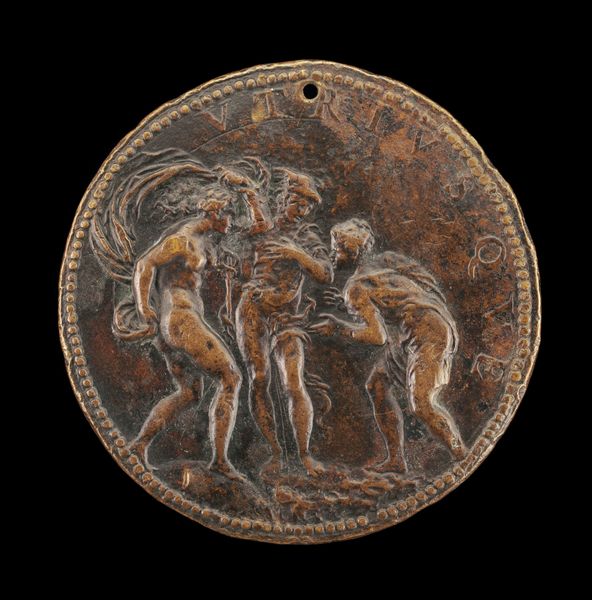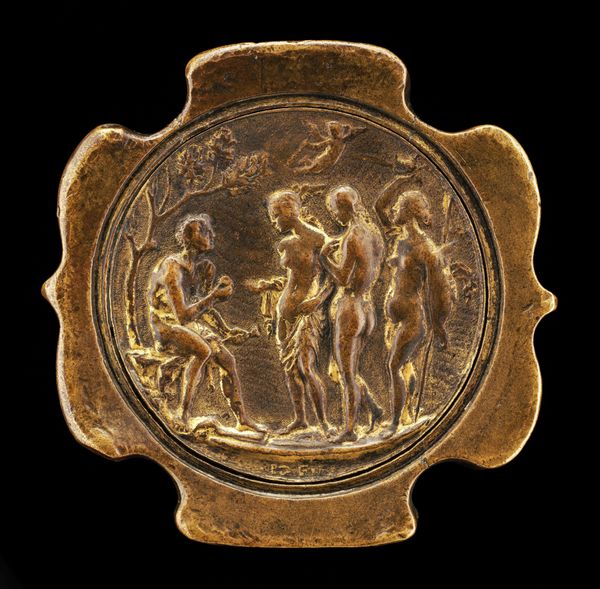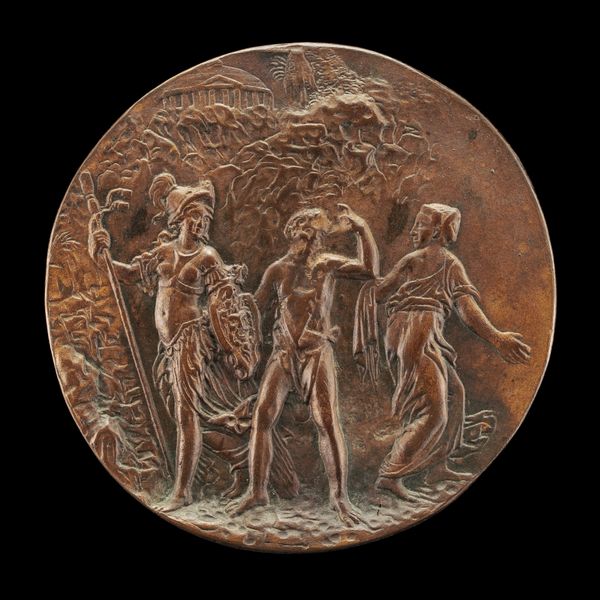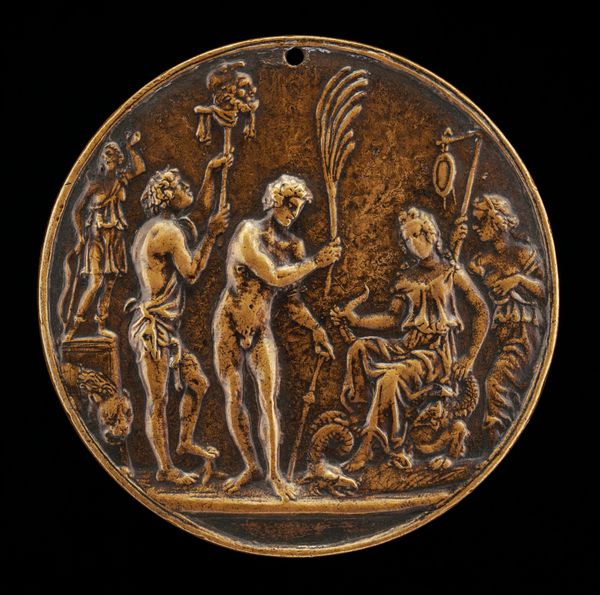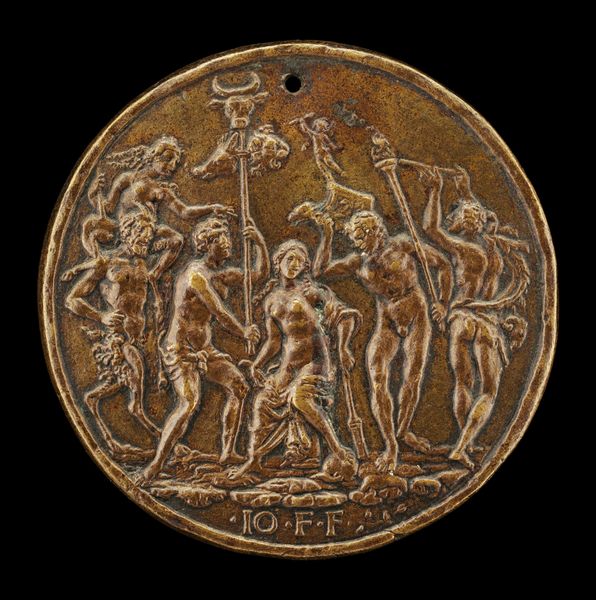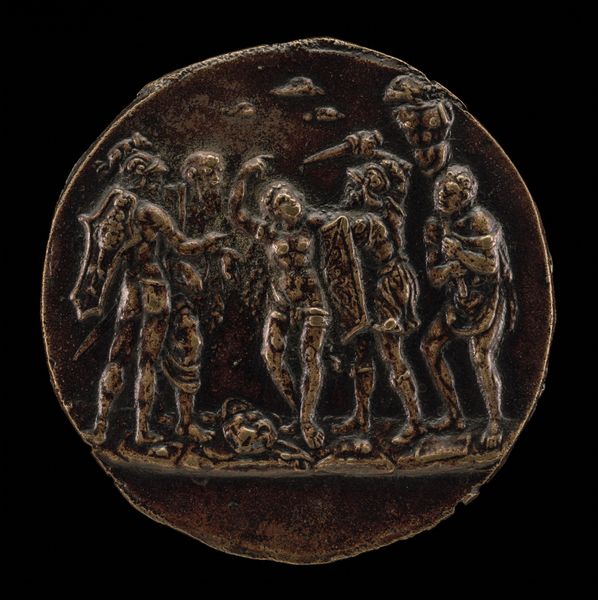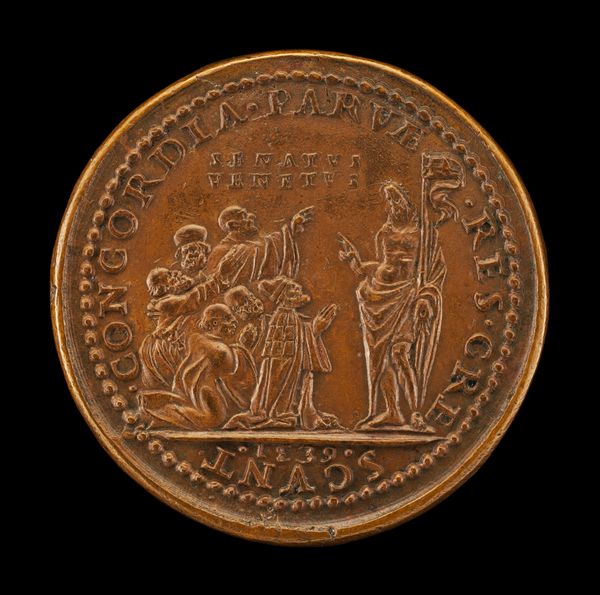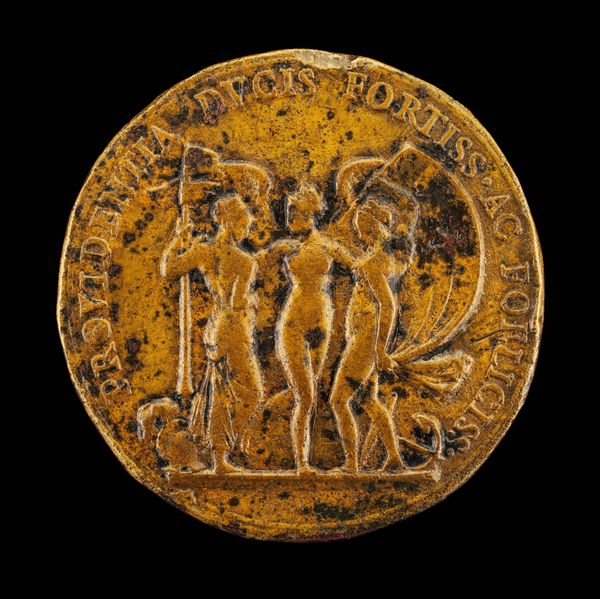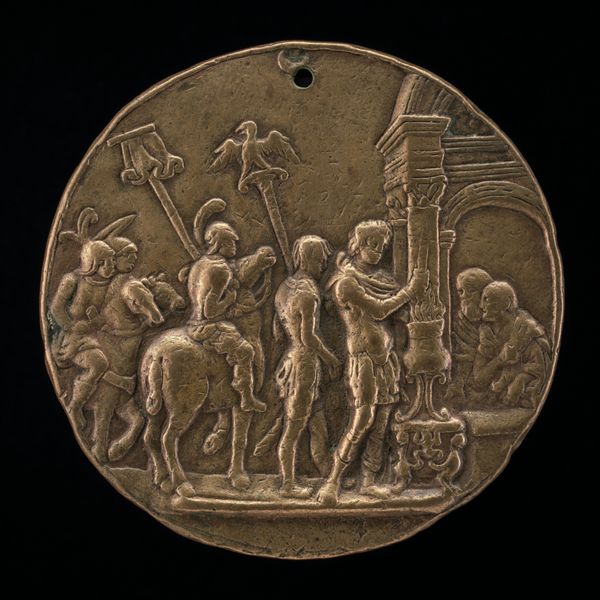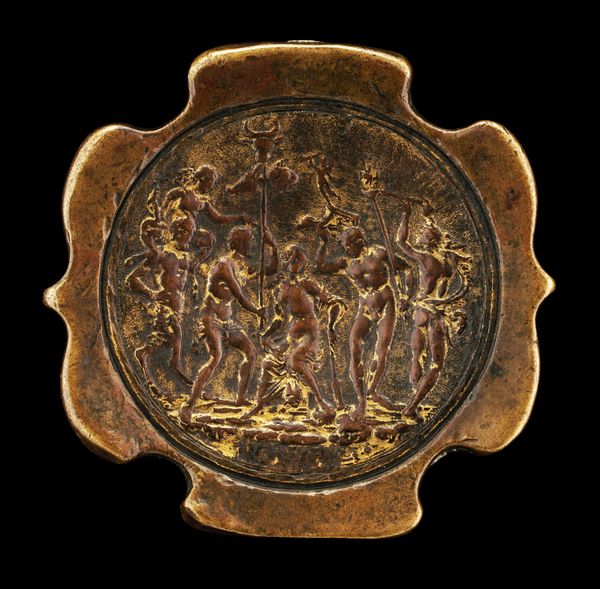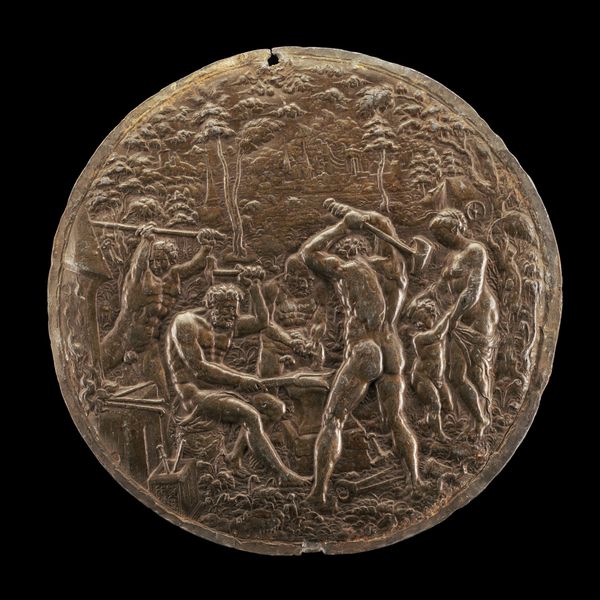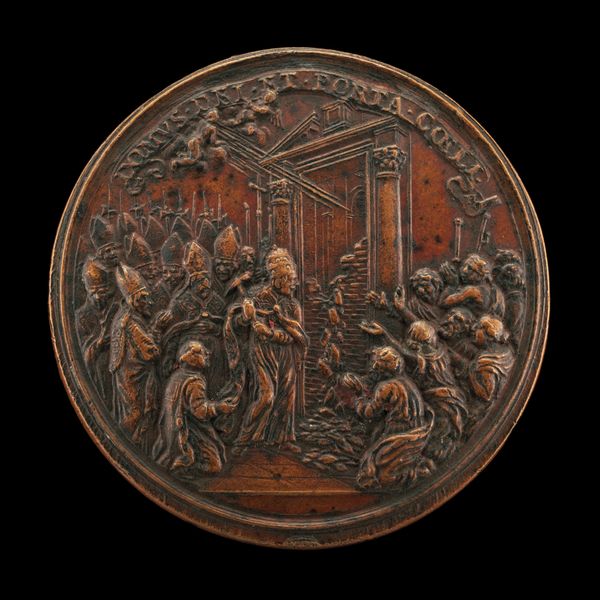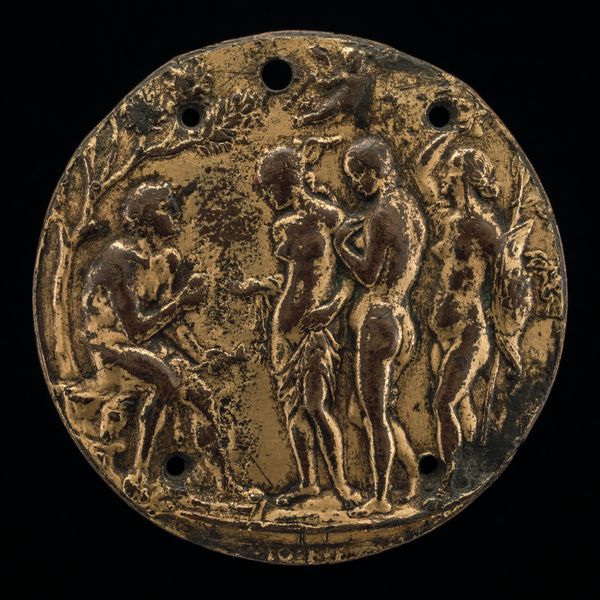![The Judgment of Paris [reverse] by Giovanni Battista Cambio, called Bombarda](/_next/image?url=https%3A%2F%2Fd2w8kbdekdi1gv.cloudfront.net%2FeyJidWNrZXQiOiAiYXJ0ZXJhLWltYWdlcy1idWNrZXQiLCAia2V5IjogImFydHdvcmtzLzgyZDNmMjA4LTM2OTAtNDA5Yi04YjgxLWM5YWVhMzBhOTZkZi84MmQzZjIwOC0zNjkwLTQwOWItOGI4MS1jOWFlYTMwYTk2ZGZfZnVsbC5qcGciLCAiZWRpdHMiOiB7InJlc2l6ZSI6IHsid2lkdGgiOiAxOTIwLCAiaGVpZ2h0IjogMTkyMCwgImZpdCI6ICJpbnNpZGUifX19&w=3840&q=75)
The Judgment of Paris [reverse] c. late 16th century
0:00
0:00
carving, relief, bronze, sculpture
#
medal
#
carving
#
allegory
#
relief
#
bronze
#
figuration
#
11_renaissance
#
sculpting
#
ancient-mediterranean
#
sculpture
#
carved
#
history-painting
#
nude
Dimensions: overall (diameter): 6.28 cm (2 1/2 in.) gross weight: 92.68 gr (0.204 lb.) axis: 6:00
Copyright: National Gallery of Art: CC0 1.0
Editor: Here we have Giovanni Battista Cambio’s bronze relief carving, "The Judgement of Paris", from the late 16th century. It's a small, circular medal depicting nude figures; the three goddesses are lined up awaiting judgment, but overall the composition feels crowded, almost claustrophobic. How do you interpret this work, considering its historical context? Curator: That feeling of claustrophobia is interesting; it speaks, perhaps, to the restrictive roles imposed on women, even goddesses, within patriarchal societies. This medal references a pivotal moment of the Trojan War saga: Paris must decide who is the fairest— Hera, Athena, or Aphrodite. But beyond the myth, it acts as a mirror reflecting Renaissance ideals about female beauty and power. The male gaze is literally inscribed into this piece. Doesn’t this competition for male approval say much about the power dynamics of the time? Editor: Yes, absolutely! And it's even reinforced by Paris making the selection. Aphrodite winning because she offered him Helen feels particularly… reductive. It all boils down to transactional relationships. Curator: Precisely! Aphrodite “wins” through offering a prize, a woman, positioning beauty and women as commodities. So, how can we unpack this medal’s statement, both celebrating and simultaneously critiquing the social construction of beauty, power and desire? What does this medal, circulated amongst elites, whisper about acceptable female roles and influence? Editor: It makes me consider who commissioned this medal and for what purpose. It's a complicated piece; a celebration and critique, as you said. I hadn't considered the circulation and reception of such a work within a limited, privileged sphere. Curator: Right, its context enriches our experience. By engaging intersectional readings—gender, power, class—we reveal the ideological undertones beneath this seemingly simple mythological scene, right? Editor: I completely agree! Examining these artworks through a contemporary lens really unlocks their complexities and speaks to broader themes of power, representation, and social structure. Thank you!
Comments
No comments
Be the first to comment and join the conversation on the ultimate creative platform.

